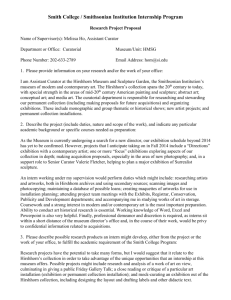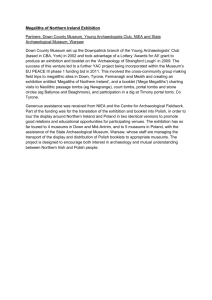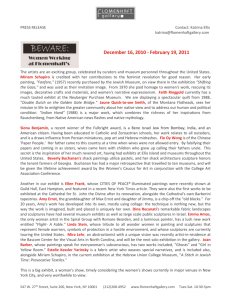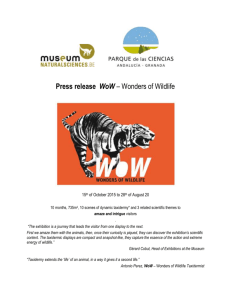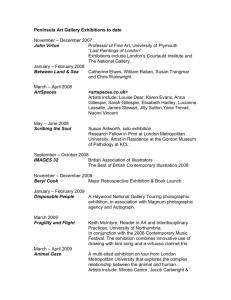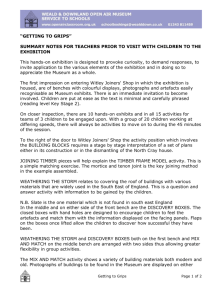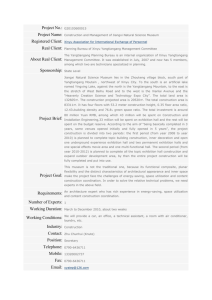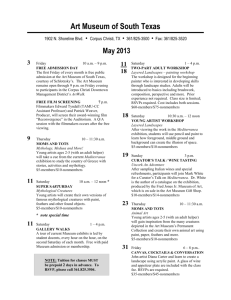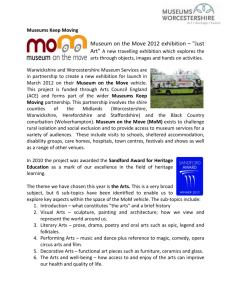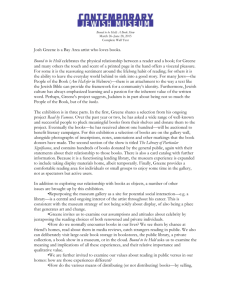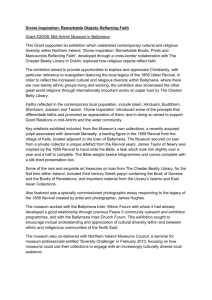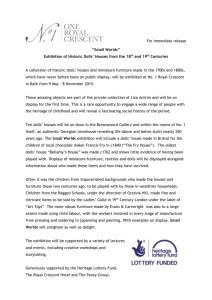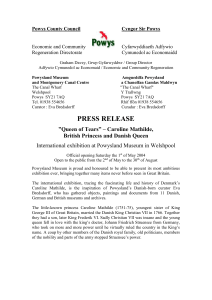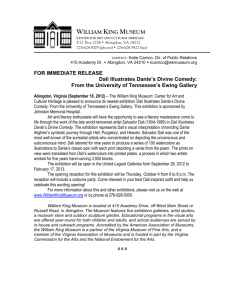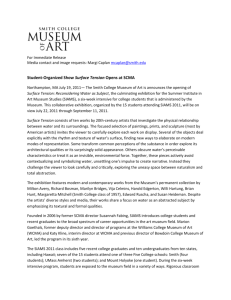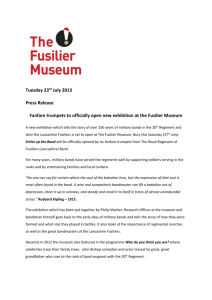DTPPTV - ExhibitFiles
advertisement
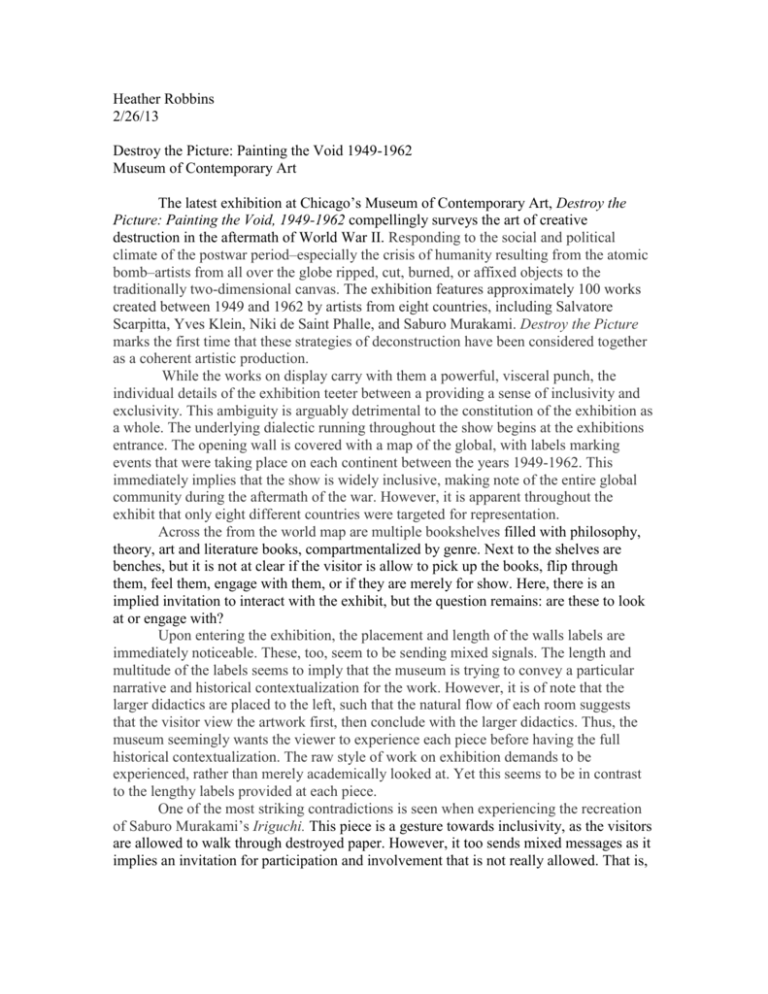
Heather Robbins 2/26/13 Destroy the Picture: Painting the Void 1949-1962 Museum of Contemporary Art The latest exhibition at Chicago’s Museum of Contemporary Art, Destroy the Picture: Painting the Void, 1949-1962 compellingly surveys the art of creative destruction in the aftermath of World War II. Responding to the social and political climate of the postwar period–especially the crisis of humanity resulting from the atomic bomb–artists from all over the globe ripped, cut, burned, or affixed objects to the traditionally two-dimensional canvas. The exhibition features approximately 100 works created between 1949 and 1962 by artists from eight countries, including Salvatore Scarpitta, Yves Klein, Niki de Saint Phalle, and Saburo Murakami. Destroy the Picture marks the first time that these strategies of deconstruction have been considered together as a coherent artistic production. While the works on display carry with them a powerful, visceral punch, the individual details of the exhibition teeter between a providing a sense of inclusivity and exclusivity. This ambiguity is arguably detrimental to the constitution of the exhibition as a whole. The underlying dialectic running throughout the show begins at the exhibitions entrance. The opening wall is covered with a map of the global, with labels marking events that were taking place on each continent between the years 1949-1962. This immediately implies that the show is widely inclusive, making note of the entire global community during the aftermath of the war. However, it is apparent throughout the exhibit that only eight different countries were targeted for representation. Across the from the world map are multiple bookshelves filled with philosophy, theory, art and literature books, compartmentalized by genre. Next to the shelves are benches, but it is not at clear if the visitor is allow to pick up the books, flip through them, feel them, engage with them, or if they are merely for show. Here, there is an implied invitation to interact with the exhibit, but the question remains: are these to look at or engage with? Upon entering the exhibition, the placement and length of the walls labels are immediately noticeable. These, too, seem to be sending mixed signals. The length and multitude of the labels seems to imply that the museum is trying to convey a particular narrative and historical contextualization for the work. However, it is of note that the larger didactics are placed to the left, such that the natural flow of each room suggests that the visitor view the artwork first, then conclude with the larger didactics. Thus, the museum seemingly wants the viewer to experience each piece before having the full historical contextualization. The raw style of work on exhibition demands to be experienced, rather than merely academically looked at. Yet this seems to be in contrast to the lengthy labels provided at each piece. One of the most striking contradictions is seen when experiencing the recreation of Saburo Murakami’s Iriguchi. This piece is a gesture towards inclusivity, as the visitors are allowed to walk through destroyed paper. However, it too sends mixed messages as it implies an invitation for participation and involvement that is not really allowed. That is, people can walk through it, but are not allowed to touch or augment the torn paper in any way. It appears that there is a push-pull relationship between what the Museum of Contemporary Art wants to promote and the standard construct that it abides by. It would seem that the museum is grappling with trying to be progressive and contemporary, while abiding by traditional rules of museum practice. They desire to make the connection between what lies within the museum walls and translating that into human experience, while maintaining a hierarchical distance – treating artwork as precious objects – to be looked at and not touched. The MCA seems to want begin to challenge conventional museum etiquette, while simultaneously playing by rules.


